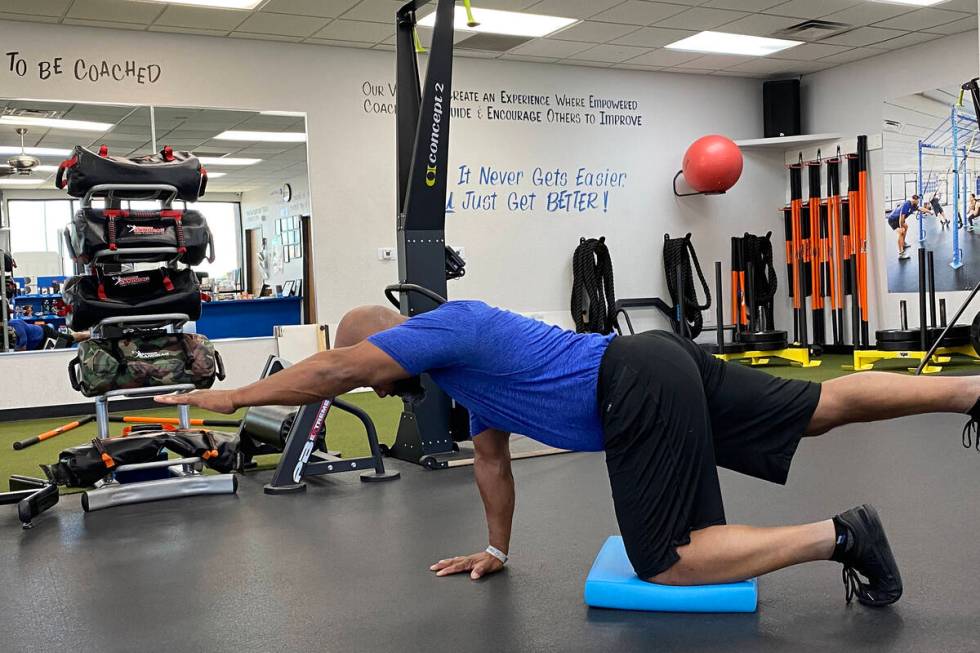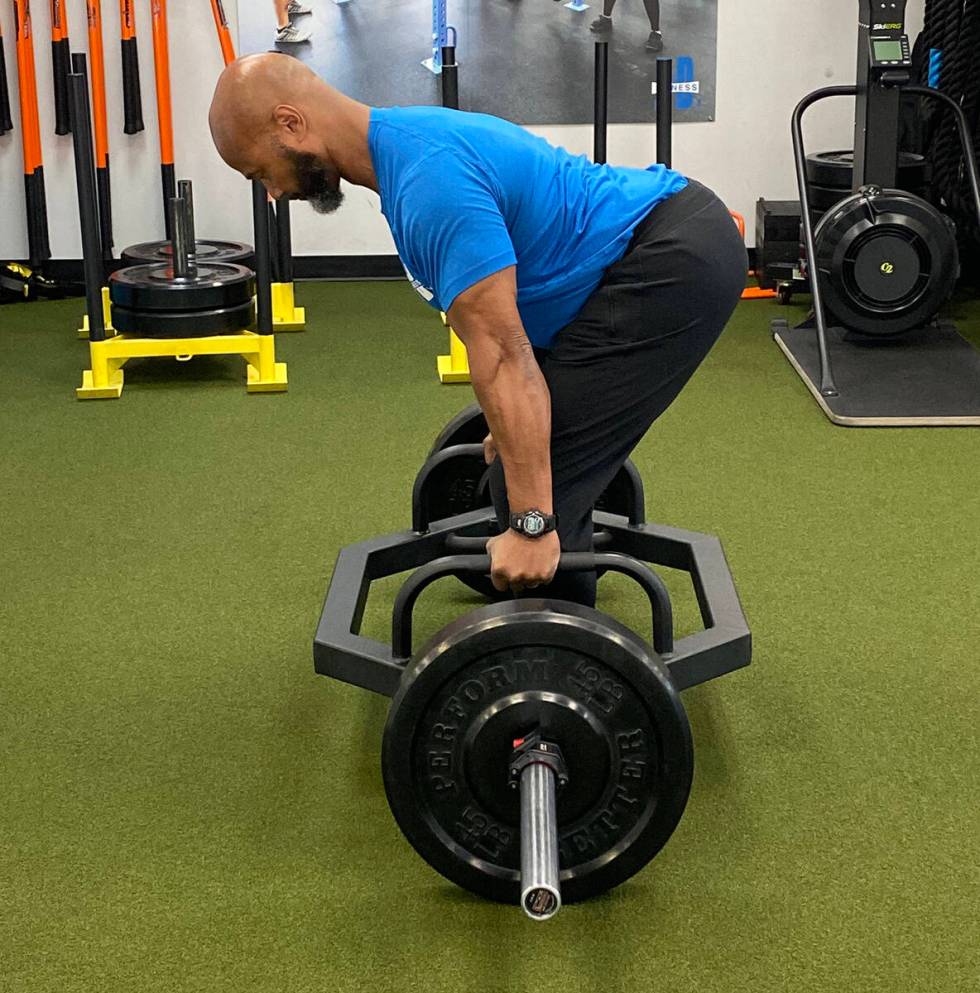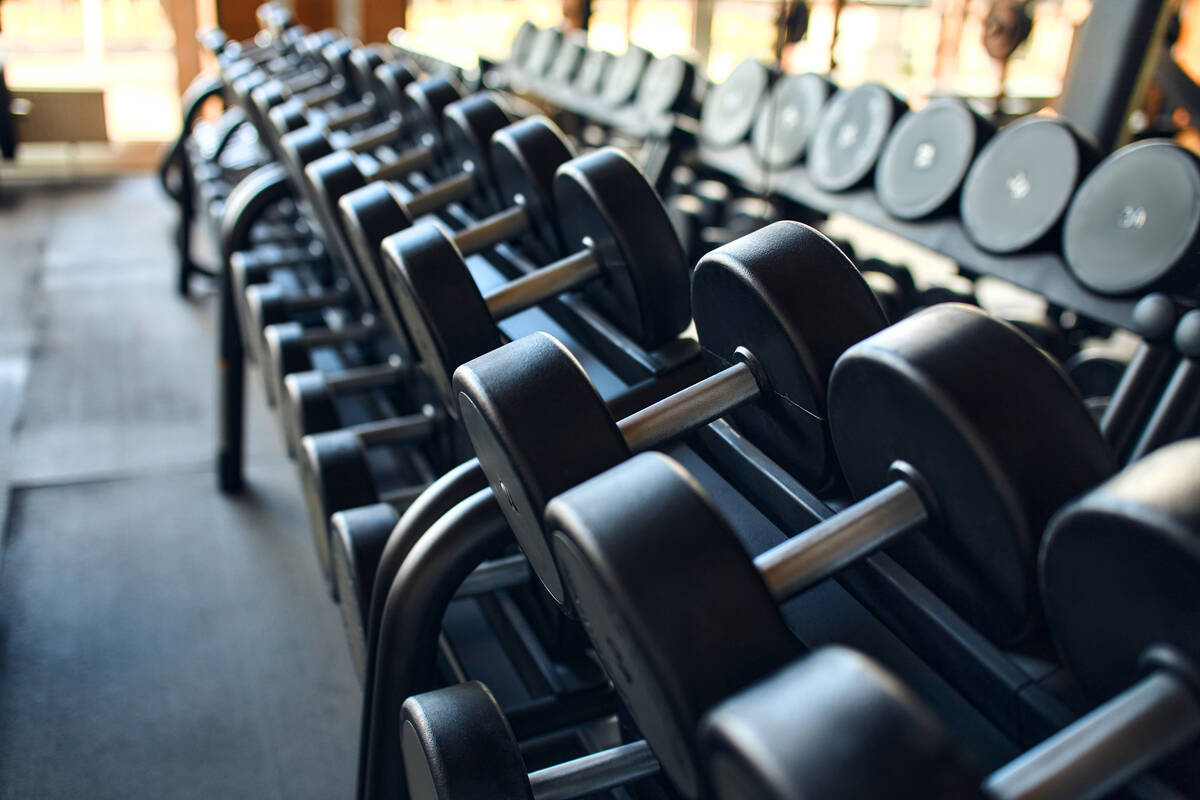How to adjust your fitness training as you age
We all age, and as we age, the way that we train should change. Let’s look at how training should differ in your 20s, 40s, and 60s and beyond.
This adjustment should take into consideration an improved skill level in the exercises you can do.
Different protocols can be applied for different fitness goals, but for our purpose, I’ll make improving overall strength the objective.
The parts of a workout can be put into three buckets: the warmup, auxiliary exercises and big lifts.
The purpose for the warmup is to address the quality of your muscle and connective tissues and prepare the body for exercise. I recommend foam rolling and trigger point work.
I start everyone with foam rolling on the Big 3 areas: the glutes, the hamstrings and the thoracic spine (upper back). The goal is to increase blood flow to the area and change the tissue quality.
We want our muscle tissue to glide and stretch as we use it. It should respond like taffy on a Las Vegas summer day, not like beef jerky.
In our 20s, five minutes on the Big 3 areas should suffice. With age, you will start to spend more time here.
In our 40s, we’ll add the quadriceps, the iliotibial band area and the latissimus dorsi. If you sit at a desk for eight hours a day, you may have tight pecs, needing additional work and extending our tissue time to 10 minutes.
Once we reach our 60s, we may have picked up a few overuse injuries. Twelve to 15 minutes of foam rolling is recommended at this age. A common obstacle to this can be getting on and off the floor; a massage gun or percussive tool can assist. Research shows that you need at least 1½ to two minutes of foam rolling in a specific area to create a change in tissue quality.
After the tissue work, a few mobility drills will complete the warmup. This is generally some type of active hamstring drill, hip and upper back mobility. This should take three to four minutes at most. If you have a history of ankle issues, we may add an ankle mobility exercise.
To summarize the warmup time:
In your 20s: 5-7 minutes.
In your 40s: 12-15 minutes.
In your 60s and beyond: 15-20 minutes.

Next up are the auxiliary exercises. These are all the exercises that are not considered a big lift.
What classifies a big lift? Exercises that use multiple joints, cover a large range of motion and have speed and tempo as a component. Squats, hip hinge exercises, pulling and presses are big lifts.
Leg extensions, bicep curls, and core work are examples of auxiliary work. In an average routine, you may complete eight exercises in total. Four to five of your exercises may be considered auxiliary exercises. I consider these the glue for the other exercises.
These are also the movements that will make the main exercises better: Core drills allow you to press more efficiently overhead. A mobility exercise for the hips will enable you to squat more efficiently.
A breakdown of time spent on auxiliary exercises:
In your 20s: 10-12 minutes.
In your 40s: 12-15 minutes.
In your 60s and beyond: 15-20 minutes.
The final stage, big lifts, is where you get strong. These are also the exercises that ramp the heart rate up. These moves will require more recovery time between sets.
If I’m starting out with a person in their 20s, they may have four to five exercises in this group. The objective is to build a base, and they will recover quickly. Someone in their 40s will complete three to four. The person in their 60s or older may perform two to three.

A breakdown of time spent on big lifts:
In your 20s: 20-30 minutes.
In your 40s: 15-20 minutes.
60s and older: 10-15 minutes.
That’s an overall breakdown of how I recommend adjusting your workouts as you age.
Consider the rock, pebble and sand in a jar analogy. Grab an empty mason jar. Put in your rocks first. Those are the big lifts. You may fit three to four rocks. Then add the pebbles. This is the auxiliary movements. Finish filling the jar with sand. That is your warmup.
This is a basic guideline. Listen to your body and adjust accordingly. If you aren’t sure, seek the advice of a certified professional.
Doug Sheppard is a certified personal trainer with 33 years of experience and owns J&D Fitness Personal Training in Las Vegas.


















